- Home
- Neal Asher
Orbus Page 15
Orbus Read online
Page 15
‘No useful metal in him,’ Drooble quips.
‘Or still on him,’ Sniper adds.
Obviously this one was not a member of the King’s Guard, since the burnt remains lying curled against the wall show none of the mutations displayed by the carapace retrieved from Montmartre, or by the Prador Vrell, and anyway, as Orbus now understands it, any attack upon one of the King’s Guard would result in the attacker being incinerated when the Guard, if losing the fight, detonates its armour’s fusion tactical. Perhaps the fact of the resident here not being such a formidable opponent is why this place was chosen as a target. He walks over to the creature’s remains, his multigun never wavering from it, and peers down carefully. This is the best sort of Prador to encounter: a dead one.
‘What the hell is going on here?’ he asks. ‘If this is the result of a Polity operation, we wouldn’t have been sent here. So who did this?’
None of his companions can supply an answer.
‘Gurnard?’ he enquires.
The ship AI’s reply is immediate. ‘Time for you to leave that place, just as quickly as you can.’
‘Why?’
‘A Prador kamikaze just exited U-space and is on its way here, now.’
7
Prador are not constrained by any morality concerning treatment of their children. Their youngest, their third-children, they keep in confined conditions and encourage to fight with each other. Many of these children are literally torn apart, and those severely wounded soon become the victims of their fellows. In second-childhood the competition continues, but now the children are also selected for intelligence and technical ability, while those not making the grade become lunch for the others. This process continues in first-childhood, though those that fail the challenge are very often not just killed. Much has already been invested in such a child, so its brain and part of its nervous system are cut out to serve as the controlling intelligence in either a drone or a spaceship. It was therefore not unexpected that during the war such children were used as U-space kamikazes–massive flying antimatter bombs used to destroy Polity capital ships, space stations, or sometimes entire worlds.
–WEAPONS DIRECTORY NOTES, E.B.S Heinlein
Records aboard Vrost’s vessel supplied the location of the Graveyard outpost, but the haul is disappointing. Its lone occupant being a single Prador first-child is a sufficient explanation for the outpost’s evident poverty: it is merely a watchpost to relay early warning to the border-defence stations, occupied by a first-child supplied by some Prador family other than King Oberon’s own. It seems that if Vrell wants to track down bigger hauls of resources and materials of Prador manufacture within the Graveyard, he needs to find the location of the King’s Guard. This, then, poses the further problem of how he takes those resources away from them without them wrecking the whole lot when they fusion-suicide. Perhaps it would be better instead to hit a few of the Human settlements here?
In the fluctuating glare of an unstable green sun, Vrell’s spaceship hangs like a pomegranate crushed and split in many places and swarming with mites. Repairs continue apace and, by lying in close orbit to the erratic output of lethal radiation, this offers perfect cover as the ship slowly changes shape, its workforce of sub-AI armour steadily drawing closed the gaps in its hull. The present weapons complement is now 40 per cent functional and, though the internal structure still lies some way from optimum, Vrell is pleased.
After defrosting and then rapidly consuming steaks of flesh hewn from a homeworld decapod food animal, he carefully inspects himself. Ever since ceasing to consume anything containing the Spatterjay virus, he has noted the changes in himself slowing. His form, which was completely disc-shaped when he boarded this ship, has lengthened slightly and the sharp spike of a tail has appeared, something a little like the ovipositor of female Prador–indeed a worrying development. Donning armour he recently adjusted to fit his now elongated form, Vrell decides it is time to tour his new domain, not because there is any of it he cannot easily view from the Sanctum, but because he feels the need for exercise and because things he can hunt scuttle and slither in some of the more shadowy sections of the vessel.
He’d first spotted them while scanning internal repairs to the hull armour overlying one area of the ship that contained, amongst other things, a third-child nursery. Doubtless that is where they came from: the Spatterjay virus having worked its grotesque magic upon the nerveless living dead in the nursery itself. Further scanning confirms this conjecture when Vrell sees that the nursery is utterly empty of corpses.
Arming himself with both a rail-gun and a particle cannon, he sends a control-unit signal to the now repaired Sanctum doors and steps out into the corridor. Even as he enters the drop-shaft at one end, he notes that two of his armoured servants have removed sections of wall to get to the damaged structural members lying beyond, where they are currently welding into place some triangular strengtheners at the beam joints. Briefly accessing their programming, he sees this is growing increasingly complex as it adapts to new circumstances. They are strengthening the superstructure because certain repairs to the hull armour have repositioned load points within the ship. This is something Vrell has already considered with the intention of studying later. He does not know whether to be glad or worried that his slaves have got to the problem before him.
Vrell studies their programming a while longer and notices something else: how odd corruptions in that same programming are generating inadvertent limb movements. Perhaps this is all part of their increasing complexity, for that must give greater room for error, but he doesn’t like it. Later he will have to study this development more closely and, if necessary, shut them all down and reprogram them. It isn’t something he wants to do, seeing how fast their work is now progressing.
Throughout the ship, new metal and new welds gleam, some of the specialized alloys already beginning to take on a dull patina as their outer layers oxidize into a hard coating. Wherever Vrell goes there is activity: maglev trains shifting materials to where required; floating pallets of ordnance being taken to those rail-guns once again operational; numerous pallets of scrap metal and various materials on their way to internal factories for reprocessing; his slaves removing burnt-out optics, computer hardware, re-insulating s-con cables, rebuilding structure. It is all very very gratifying, but Vrell remains utterly aware that no matter how spaceworthy this ship is made, it is still only one ship.
Abruptly halting at a shaft leading down to the third-child nursery, Vrell momentarily draws his thoughts away from the day-to-day mundanities of repairing his vessel and considers what else he wants. On Spatterjay it was all about survival, for he knew that there could be no escape for him whilst Vrost’s ship orbited that same world. Vrost would never have allowed Vrell’s ship to leave the planet, and would have scoured the surface until finding and killing him. But what now? In either the Third Kingdom or the Polity he has no doubt that he would be hunted down, because King Oberon will want any dangerous adversary dead, and the Polity AIs would not want a Prador destroyer freely roaming their realm. Within the Graveyard neither side will want to deploy warships for the task, but covert forces will still be arrayed against him. But why bother remaining in any of these three zones when there is a whole universe out there he can lose himself in?
Like all Prador he is instinctively aggressive, and has never questioned his urge to strike back hard at any attacker. Now, questioning this natural response, he feels that the answer involves more than just a survival reaction. In either Polity or Kingdom he cannot hope to remain free, but nor does he want to just run away. Why should he? The bottom line, Vrell surmises, is that he feels himself the subject of a huge injustice. It is simply unfair. And Oberon is now his prime target simply because the King tried to have him killed. Vrell realizes that his present notions of fair and unfair are not natural to the Prador, and he wonders therefore how such Human concepts have lodged themselves in his mind.
Still mulling all this over, he s
teps into the irised gravity field of the drop-shaft and descends. Then, after negotiating a few corridors and passing on through into a portion of the ship whose ruination does not effect the vessel’s overall running, it is a welcome distraction for him to find monsters there that lie outside his own mind.
A knot of wreckage occupies an area extending half a mile across. Occasional gravplates still function, but often lying athwart each other to create strange effects of perspective. Some lights still work, a few of them casting odd portions of the spectrum as elements in them have burnt out or been dislocated into some infrequently used setting. Superconducting cables, their insulation damaged, occasionally short themselves against twisted I-beams, gases leak to create off-colour fogs twisted into strange shapes by damaged gravplates.
Even for Vrell this is a spooky place, and when the first of the new residents suddenly appears, it seems perfectly in keeping with its surroundings.
The thing looks only vaguely like a Prador third-child. Its numerous legs have grown extensively, in the process acquiring a few more joints, and have now shifted to its four quarters. Studying the thing as it eases itself through the wreckage towards him, Vrell realizes that this new leg positioning is well suited to this partially zero-gravity environment. Its body is now globular, and a huge trumpet-like leech mouth sprouts from its near end, while like Vrost it possesses stalked eyes, though they sprout in a ring about the base of that ever-questing mouth.
Vrell continues watching it, fascination overriding his initial reflex to blast the thing as soon as it appeared. Maybe he should just let it continue on its way, but this is no resident of a planetary jungle going about its day-to-day life; it is a creation of the mutating effects of the virus, searching for food in a place where little food exists. In whatever passes for its mind–some leech-based organ recently grown inside it–any movement means food and, once through the tangle of metal, it throws itself at the moving thing that first attracted it.
Vrell raises his free claw and snaps it closed about the creature’s globular body. It struggles with surprising strength, the sharp tips of its legs scraping frantically against his armoured turret, then the trumpet mouth thunks down against his claw, its complex internal mouthpart of saw-edged discs and bony blades grating against the armour. He pushes it further away from him to inspect it better. To be able to move like this it must have at least grown a rudimentary nervous system, and since Vrell’s nanite is still everywhere throughout this ship, that nervous system must be based on something other than the genome of the third-child it once was.
Further movement out in the tangle of wreckage attracts his attention, and he realizes that other creatures of a similar nature are moving in. He could easily toss this one away from him and hit it with the particle cannon, before turning both of his weapons on the others now approaching, but his curiosity has been stirred. Still clutching his trophy, he abruptly backs out of the area into the better-lit corridors, and retreats to the nearest door. As he goes through, the racket of pursuit reaches him, and turning back he watches through the closing gap in the door the approaching horde of monstrosities. None of them can reach him before the door closes.
Next, Vrell formulates and dispatches new orders through his control units to his armoured slaves, instructing them to destroy any of the mutated Prador they encounter, barring themselves of course, except those in this particular area, which is to be totally sealed off but for this one entrance. Strange random bits of code accompany the acknowledgement received from them. Later, he will deal with that later. He turns and takes his struggling captive towards one of the medical research units aboard the vessel, all weapons forgotten and his focus now upon research.
Having survived the winnowing-out process of third-childhood, Nool makes it to second-childhood as a strong and vicious creature–but no more so than all his contemporaries, since they have undergone the same process. Competition is strong in the ranks of second-childhood, where both their responsibilities and their likelihood of dying increase. Nool soon learns that, though it is an honour to be allowed to serve Father, and such servitude increases the possibility of one being raised to first-childhood, Father’s Sanctum is a very dangerous place to be. Always jealous of his own position and wary of contenders for it, Father’s first-child Golt is ever prepared to crack a youngster’s shell should it step out of line, or even show too much perspicacity. Then there is Father himself, who will deliberately set those directly below him against each other, or often, when the urge takes him, will without hesitation dismember and eat a second-child.
For many years Nool manages to avoid Sanctum duty but, merely his avoiding it for so long and carrying out his assigned tasks with a quiet efficiency inevitably brings him to Father’s notice. With two other second-children, he is given the duties of bringing megafauna steaks for Father to eat, and then cleaning his mandibles afterwards, and this is the first time he even comes within a hundred feet of his ancient parent.
Father is utterly limbless, his massive carapace supported above the gravplates of the Sanctum by grav-units attached to his underside. Control units dot his carapace below his huge heavy mandibles, some of them commanding the five Human blanks arrayed against the back wall of the Sanctum. When he is not wearing his prostheses–metal claws, legs and underarms that slot neatly into cybernetic sockets positioned where his former limbs had been–these Humans sometimes act as his hands. Nool is quick to learn that when Father does don his limbs, this is usually because he wants to make a meal of something that will certainly have other ideas on the matter. Nool sees his first two co-workers go that way, shrieking and bubbling as Father tears them apart and feeds them into mandibles that Nool is instructed to clean afterwards. Thereafter he sees another twelve second-children perish similarly. Why they were chosen and he is not, he can never fathom, but is simply grateful to survive.
The change in him begins to occur shortly after a biological weapon opens in the hold of the ship and wipes out nearly a quarter of the children aboard. Golt tears apart those second-children responsible for in-hold security, and apparently works hard to find the source of this weapon, and to ensure one never gets aboard again. Nool realizes that the first-child is actually terrified for, though conveniently Golt blames those working the hold area, the buck ultimately stops with him. Whilst all this uproar goes on, Nool, when it comes to feeding time, is redirected to a different larder. Shortly after he begins eating the rich meats which, he soon realizes, are not laden with suppressant hormones, his body begins to grow and change. Golt’s reaction, upon seeing these changes, tells Nool all he needs to know: he is turning into a first-child.
Golt becomes immediately violent, attacking him in a corridor in order to tear off one limb and crack his shell, but this mistreatment only seems to accelerate the change, and shortly afterwards Nool is sent on a mission down to the surface of a Prador world, well out of Golt’s reach. When he finally returns, he has attained full first-childhood and, summoned to the Sanctum, finds Father, in full prosthetic array, holding Golt down on the floor and meticulously tearing off all his limbs while the victim shrieks and begs for mercy. Father likes to do this sort of thing himself, though it is two of his Human blanks that operate the surgical machine that eventually opens Golt’s shell and cuts out his major ganglion and a large proportion of his nervous system. This organic material is subsequently flash-frozen and placed in storage for later installation in a drone shell. As a result, Nool is now Father’s first-child.
His ascendancy in that position does not last long.
It seems Golt himself, knowing the hormones and other chemical cocktails that kept him locked in perpetual childhood were no longer working so well, deliberately created the first weaknesses in ship security. Managing to beat Father’s chemical control of him, he wanted his parent dead so that he himself could make the transition to adulthood. Next realizing that some second-children, for Nool was not the only one, were being raised to first-childhood, he became desperate a
nd further weakened security to allow in one of the perpetual attacks devised by Prador competitors. After Golt’s fall, another weakness shows itself straight away with a shell-eating nanite in Father’s food supply, one that eats away part of his mandible before he can resort to an anti-nanite.
The summons to the Sanctum comes shortly afterwards and, still utterly and rigidly under his father’s control, Nool can do nothing but obey it. Father waits, prosthetics already in place, and orders him to the centre of the floor. Nool fights the command but his limbs obey–limbs that are soon being torn out of their sockets and tossed about the Sanctum. This agony lasts for hours, only decreasing and finally shutting down as the most essential parts of Nool are cut away and flash-frozen.
A long time must have passed while Nool sat there in storage. Awake now and gazing out through the numerous sensors in his new shell, he does not recognize the portion of the universe he is seeing. The great defence station he launched from had existed in his own time but is now much changed, and data accessible to him makes him aware that three hundred years have passed. Utterly obedient to command, he flings himself away from the station, making the required U-space calculations to get himself to a particular location. He has weapons lying under his control, but only to be used against any interloper who tries to prevent him getting there–but none do.
As he arrives above the moon, he is able to now study himself through his own sensors. He is now a torpedo of metal with two U-engine nacelles to his rear on either side of a one-burn fusion drive. At once he knows that his existence in this form will be brief, for he recognizes what he has become. Still unable to do anything but obey, he sets a course to the surface of the moon, engaging the fusion drive, which burns dirty and hard, racking up an acceleration that no creature of flesh could survive unaided. The surface comes up at him fast, and just a microsecond before impact, he carries out his final purpose: detonating the massive contra-terrene device that is his core.

 The Bosch: A Novella (Polity Universe)
The Bosch: A Novella (Polity Universe)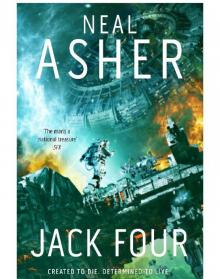 Jack Four
Jack Four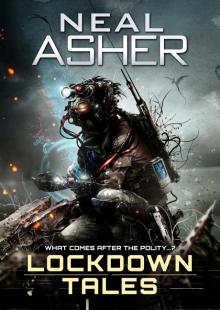 Lockdown Tales
Lockdown Tales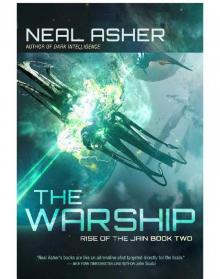 The Warship
The Warship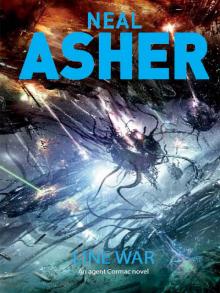 Line War
Line War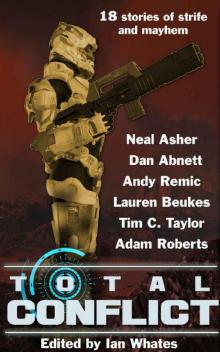 Total Conflict
Total Conflict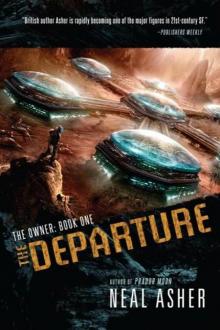 The Departure
The Departure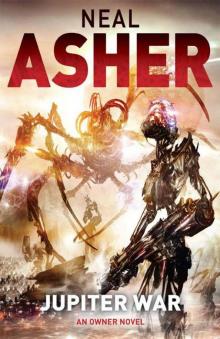 Owner 03 - Jupiter War
Owner 03 - Jupiter War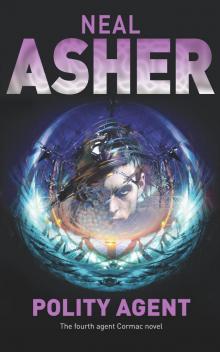 Polity Agent
Polity Agent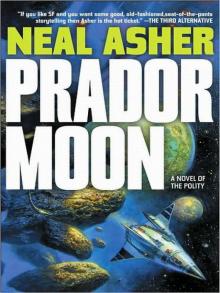 Prador Moon
Prador Moon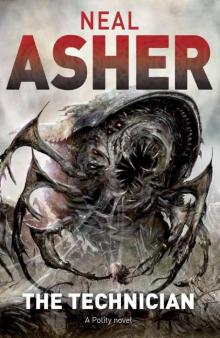 The Technician
The Technician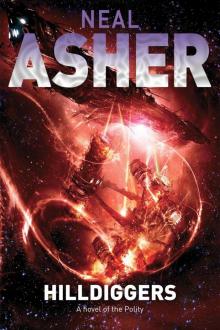 Hilldiggers
Hilldiggers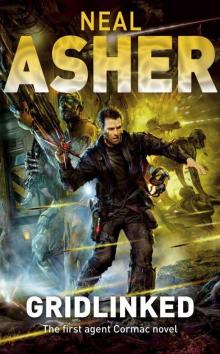 Gridlinked
Gridlinked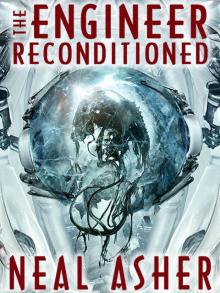 The Engineer ReConditioned
The Engineer ReConditioned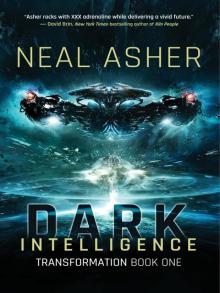 Dark Intelligence
Dark Intelligence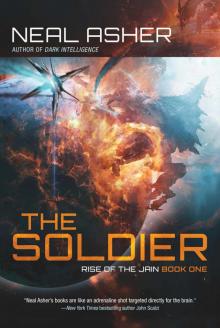 The Soldier: Rise of the Jain, Book One
The Soldier: Rise of the Jain, Book One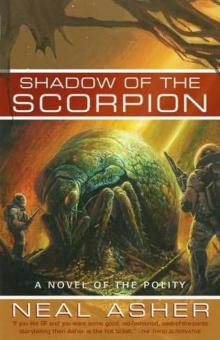 Shadow of the Scorpion p-2
Shadow of the Scorpion p-2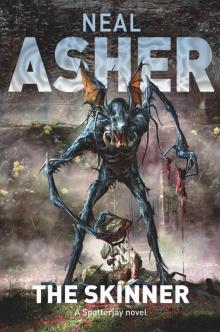 The Skinner
The Skinner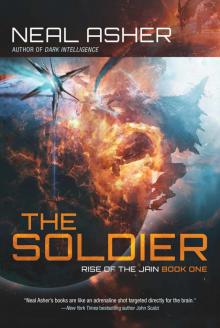 The Soldier
The Soldier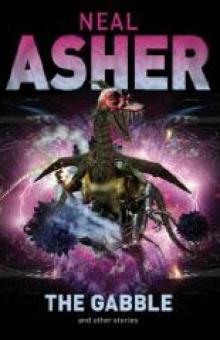 The Gabble p-13
The Gabble p-13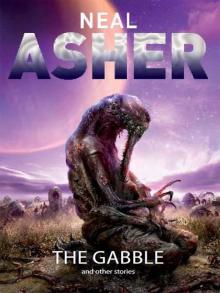 The Gabble and Other Stories
The Gabble and Other Stories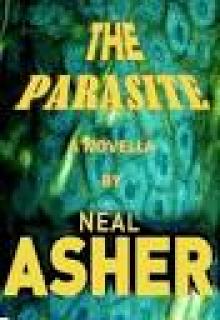 The Parasite
The Parasite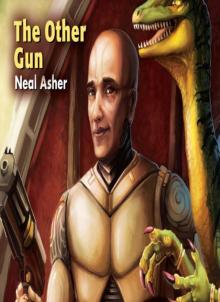 The Other Gun
The Other Gun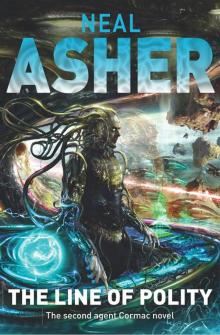 The Line of Polity
The Line of Polity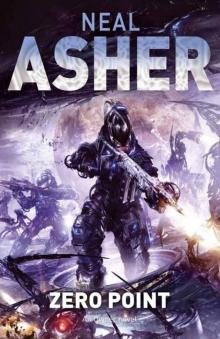 Zero Point (Owner Trilogy 2)
Zero Point (Owner Trilogy 2)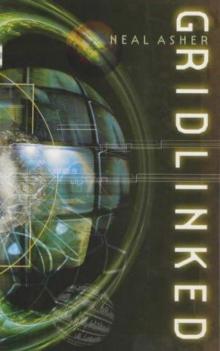 Gridlinked ac-1
Gridlinked ac-1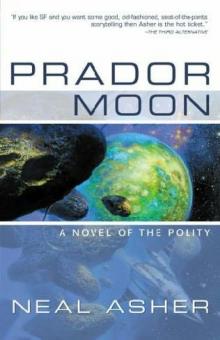 Prador Moon p-1
Prador Moon p-1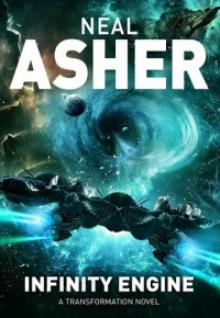 Infinity Engine
Infinity Engine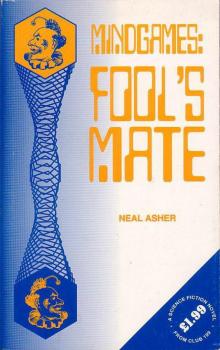 Mindgames: Fool's Mate
Mindgames: Fool's Mate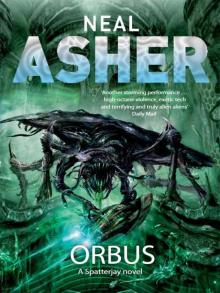 Orbus
Orbus Africa Zero
Africa Zero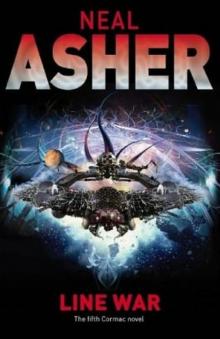 Line War ac-5
Line War ac-5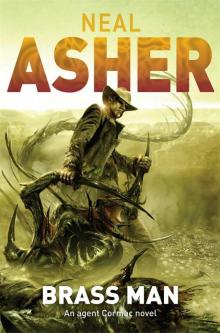 Brass Man
Brass Man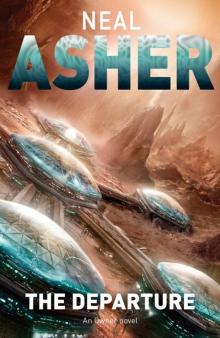 The Departure to-1
The Departure to-1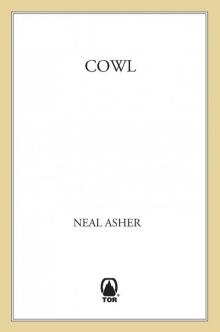 Cowl
Cowl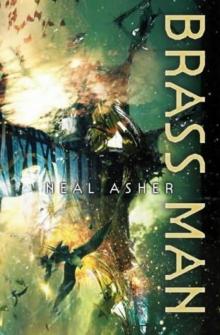 Brass Man ac-3
Brass Man ac-3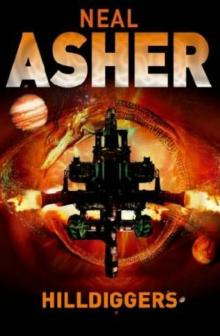 Hilldiggers (polity)
Hilldiggers (polity)![Greg Bear - [Eon Trilogy 1] - Eon (rescan) (v1.0) Read online](http://i1.bookreadfree.com/i2/04/08/greg_bear_-_eon_trilogy_1_-_eon_rescan_v1_0_preview.jpg) Greg Bear - [Eon Trilogy 1] - Eon (rescan) (v1.0)
Greg Bear - [Eon Trilogy 1] - Eon (rescan) (v1.0)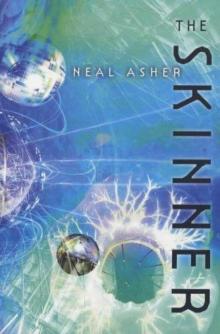 The Skinner s-1
The Skinner s-1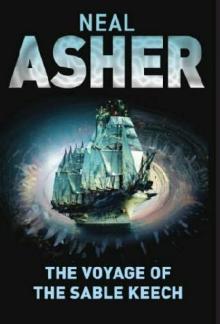 The Voyage of the Sable Keech s-2
The Voyage of the Sable Keech s-2 The Line of Polity ac-2
The Line of Polity ac-2 War Factory: Transformations Book Two
War Factory: Transformations Book Two Polity Agent ac-4
Polity Agent ac-4